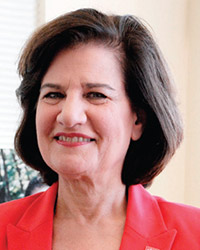By Judy Vredenburgh, President and CEO, Girls Inc.

Judy Vredenburgh
Minority health today is inescapably linked with the issue of childhood obesity. While almost a third of American youth are overweight, nearly 40 percent of African American and Latino children are overweight or obese.
We cannot afford either the loss of their futures to the myriad of health issues linked to obesity or the potentially crippling impact on our healthcare system. National Minority Health Month provides the ideal opportunity to discuss solutions grounded in respect, positive motivation, and the idea that new habits can be consistent with one’s culture.
With a service population of nearly 70 percent girls of color, our Girls Inc. Mind+Body Initiative gives girls knowledge, skills, and motivation to form and maintain a healthy, positive sense of self. We want all girls to grow up able and driven to promote their well-being and that of their families. We also understand that cultural considerations are incredibly important when it comes to health—and especially nutrition.
We partnered with MetLife Foundation to promote healthy decisions and lower obesity in communities nationwide. Our goal was to encourage small, everyday actions building into lifestyle changes. The resulting guide emphasized realistic steps and solutions, such as healthier preparations of favorite traditional dishes and a cost comparison of affordable fresh foods to pre-prepared or fast food counterparts.
With this resource, our Tarrant County, Texas affiliate asked middle school age Latinas and families to map where, how, and why they shopped for produce. Some traveled for fresh food, but lacked transportation to continually stock it. Others picked stores based on the availability of cultural products and bilingual staff. Including girls and parents/guardians was critical. Though adults usually made food purchases, girls were often in charge of younger siblings’ meals when parents were working. They also were making choices about what to eat when at school or when hanging out with friends.
The girls and families had several takeaways. They increased knowledge about purchasing fresh, affordable food in welcoming environments. They also started conversations about nutrition and supporting each other in making good choices, as seen in the experience of Leslie, 12: “I still remember everything. My mom and me talk a lot about being healthy and how to make decisions that are best for us. I like to tell my friends about what I learned too. At lunch, sometimes they ask me where I got my pomegranate or mango.”
Though we focus on girls like Leslie, we know nonprofits, health institutions, and corporations are tackling minority health together in many ways. We encourage more partnerships and their inclusion of cultural perspectives and flexible resources to ensure a healthy future for all.






